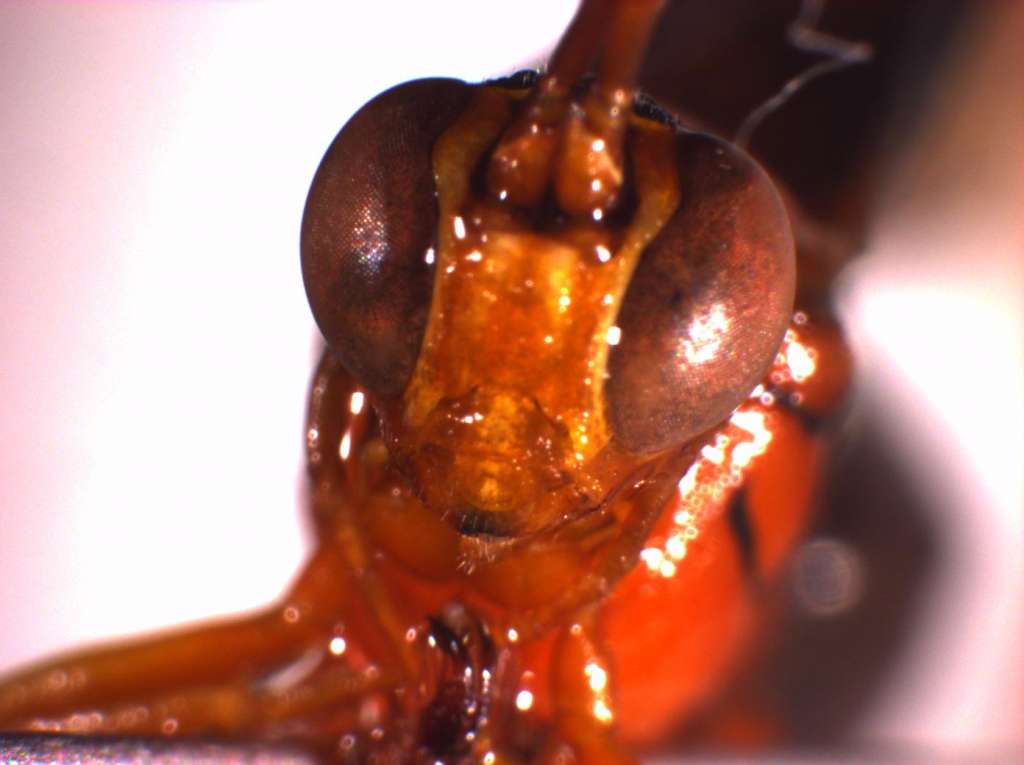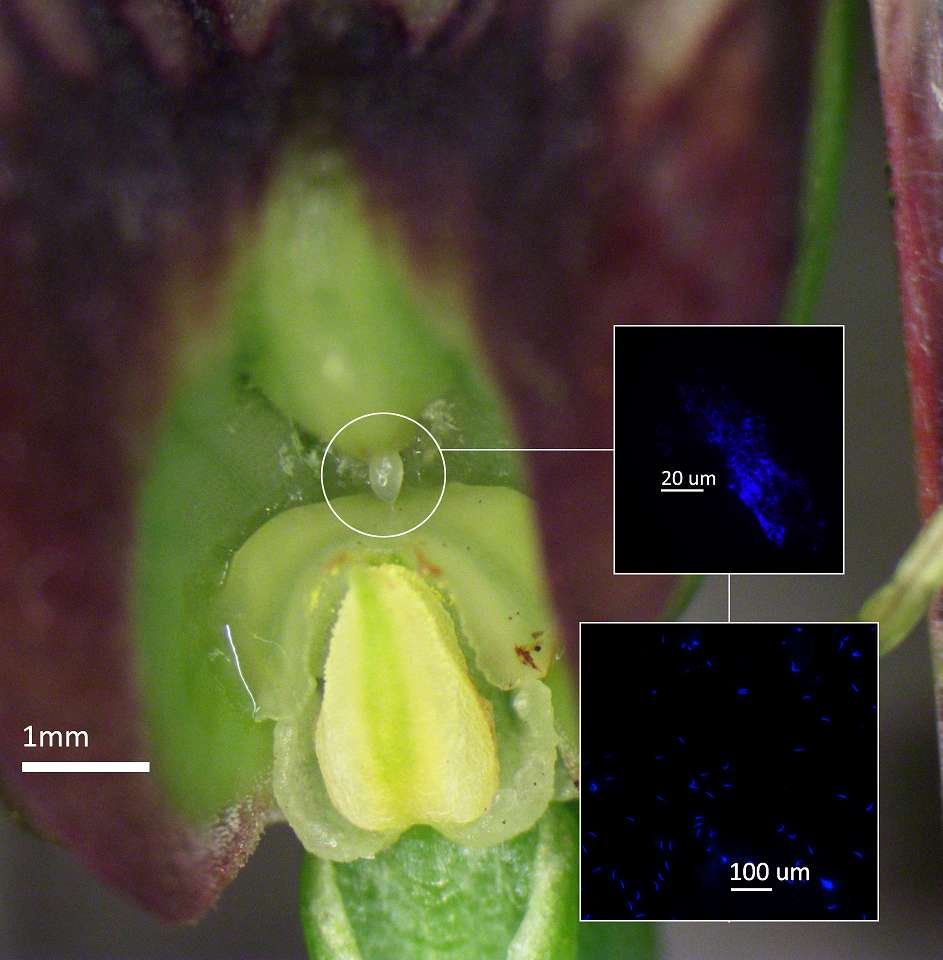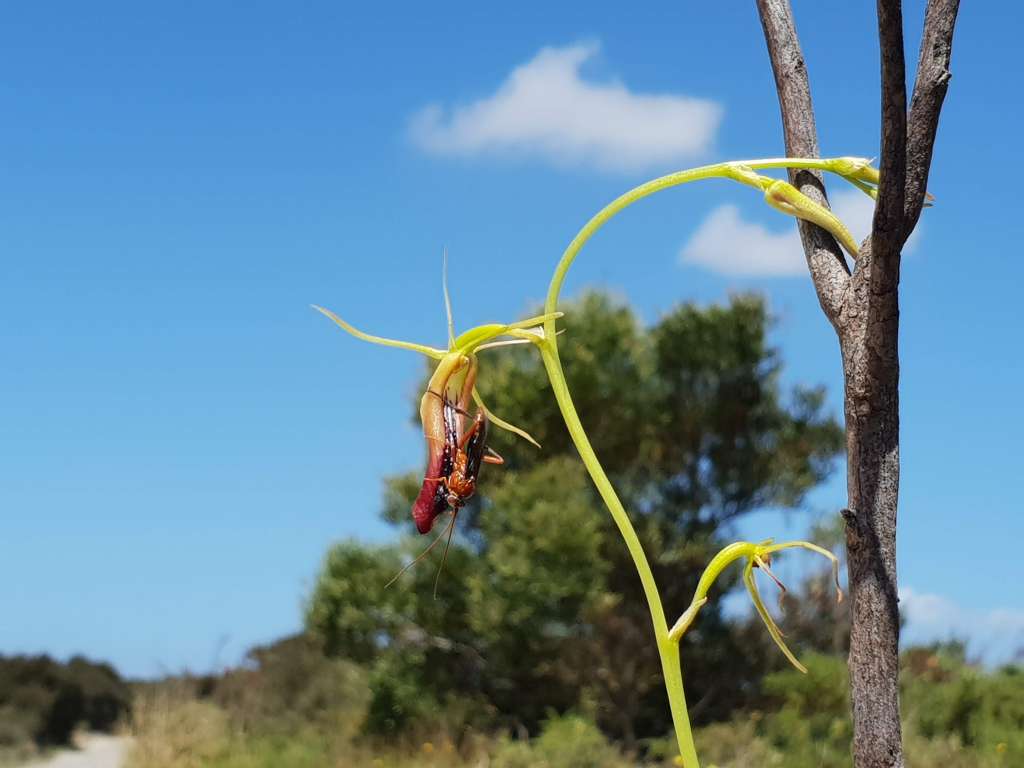While tales of people conned out of their fortunes through romance proliferate our media, the same trickery extends into the plant and animal kingdoms where scientists have recently examined the aptly named orchid dupe wasp which is deceived into mating with certain species of orchids, at a what seems to be a hefty price.
A study jointly conducted by scientists at University of Auckland and University of New England and published in Functional Ecology1, examined sperm allocation in the orchid dupe wasp. These wasps, which are the pollinators of five species of tongue orchids found in Australia and New Zealand, are tricked into mating with the flowers, suffering depleted sperm numbers as a result, the researchers found.
Amy Martin of the School of Biological Sciences and the University of Auckland was lead author of the paper and chatted to Lab Down Under about what this meant for both orchid and wasp, and how wasp populations may be affected as more and more males were tricked into mating with these orchids.
A one way relationship
Tongue orchids are a type of sexually deceptive orchid from the genus Cryptostylis and are located in Australia, New Zealand and Asia. The five species found in Australia and New Zealand bloom in summer, from November to February. They all target the same orchid dupe wasp, known as Lissopimpla excelsa, which are tricked into mating with the flower in order to encourage pollination.
Martin told Lab Down Under that these orchids are found in urban Sydney in parks that backed onto bushland such as Garigal National Park and Ku-ring-gai National Park with a lot of her own fieldwork taking place in Acron Oval in St Ives.
“It’s a wonderful native species in Australia that people maybe don’t know exist, and if you sit and watch it, you might be able to see a wasp mate with it which is quite cool,” she said.
As for the wasps themselves, Martin said they were “really, really keen” to visit these orchids, often arriving in swarms of ten or more to mate with the flower. However, the wasps were docile, she told Lab Down Under, and would not sting or bite.

Image 1: Close up of Lissopimpla excelsa. Picture by Amy Martin. Used with permission.
The research found that the wasps actually wasted sperm on the orchid during their mating attempt, with the creatures depositing their sperm on the flower in little packages called spermatophores.
“This is the only relationship where it’s known that the deceived male wastes sperm on the orchid. But people haven’t really looked for it before so it might be happening a lot more than we think,” she said.
Promoting the best type of mating
To divert males away from females in the area and encourage the best chance of pollination, the orchids have to be as deceptive as possible, Martin said.
“The more vigorous you can get your pollinator to mate with you, the more likely you are to have successful pollination, so that’s why it’s good to be really realistic and promote the best type of mating.”
To attract the males, these orchid’s primary drawcard is the way in which it accurately mimics the pheromones of the female wasp.
“It’s usually the scent that brings the males in long distance. They don’t really seem to care what the flower looks like. So I could put an orchid essence onto a pin and they will mate with the pin because the smell’s just that good,” Martin said.
The orchids themselves, while benefiting from the pollination that the wasps bring, do not seem to derive any advantage from the wasp sperm itself, Martin said.
“The sperm dries up really quickly. It was quite hard for me to get it off in time. Once it’s exposed to the elements, it just disintegrates pretty quickly. So I don’t think that the orchid could get anything other than really efficient pollination from stealing sperm.”

Image 2: Sperm droplet on Cryptostylis orchid. Picture by Amy Martin. Used with permission.
Adverse effects from wasting sperm
While the orchids benefited from this process, the relationship actually came at a cost to the male wasps, the study found.
The research compared sperm use and availability for male orchid dupe wasps that lived nearby these sexually deceptive orchids with those that lived away from these flowers.
While on average, male wasps had around 50,000 sperm in their seminal vesicles, ejaculating around 10 per cent of this stock at a time, wasps that chose to mate with these orchids had less sperm both in their seminal vesicles and their ejaculate, the study found.
This wastage meant that interacting with the orchids came at a high cost to the males themselves as they could become sperm limited, Martin said. These adverse effects could also flow through to the overall wasp population, she added.
“If there’s a cost, we want to know how that relationship might persist through evolutionary times. If males are running out of sperm and giving it to orchids instead of true females, then presumably there are a bunch of females out in the population that aren’t getting mated and can’t reproduce so why does that population persist and why has this relationship existed for so long and with lots of different species of Cryptostylis with the same wasps?”
The evolution of a complex relationship
With the study uncovering the cost to orchid dupe wasps in Australia, Martin said more research was needed to see if the same effect happened with sexually deceptive orchids in Europe and America.
“There’s not a lot of research that focuses on the pollinator of the orchid. Usually people are very orchid-focused which I can’t fault them for because orchids are great. So it’d be great if people looked at that a bit more because it’s an interesting relationship.”
More research was also needed on male wasps and sperm, Martin said, because reproductive science typically focuses on the female of the species instead of how males’ mating habits impact the population as a whole.
Martin has also just submitted her PhD which focuses on how the relationship between orchid and wasp will persist as the pair evolves over time.
Female orchid dupe wasps are haplodiploid, meaning they can reproduce without any sperm but can only have sons from unfertilised eggs. Martin surmised that if males wasted their sperm on the orchids, the unmated females would then have more sons.
“We think that means that in populations that are deceived by orchids there will be more males in those populations. That means that there are more males to keep some females with sperm and producing sons and daughters, but also more males to act as pollinators for the orchid. So in a way, the orchid stealing sperm makes themselves more pollinators as well.”
Video: Lissopimpla excelsa mating with a Cryptostylis orchid. Clip by Amy Martin. Used with permission.
Author’s note: If you enjoyed this article, you can follow Lab Down Under on Facebook or support me on Patreon. I also have my own personal Twitter account where I’ll be sharing my latest stories and any other items of interest. Finally, you can subscribe here to get my weekly blogs in your inbox.
1 Martin A, O’Hanlon J, Gaskett A. Orchid sexual deceit affects pollinator sperm transfer. Functional Ecology, 06 April 2020.
Featured image: Lissopimpla excelsa on Cryptostylis orchid. Picture by Amy Martin. Used with permission.
